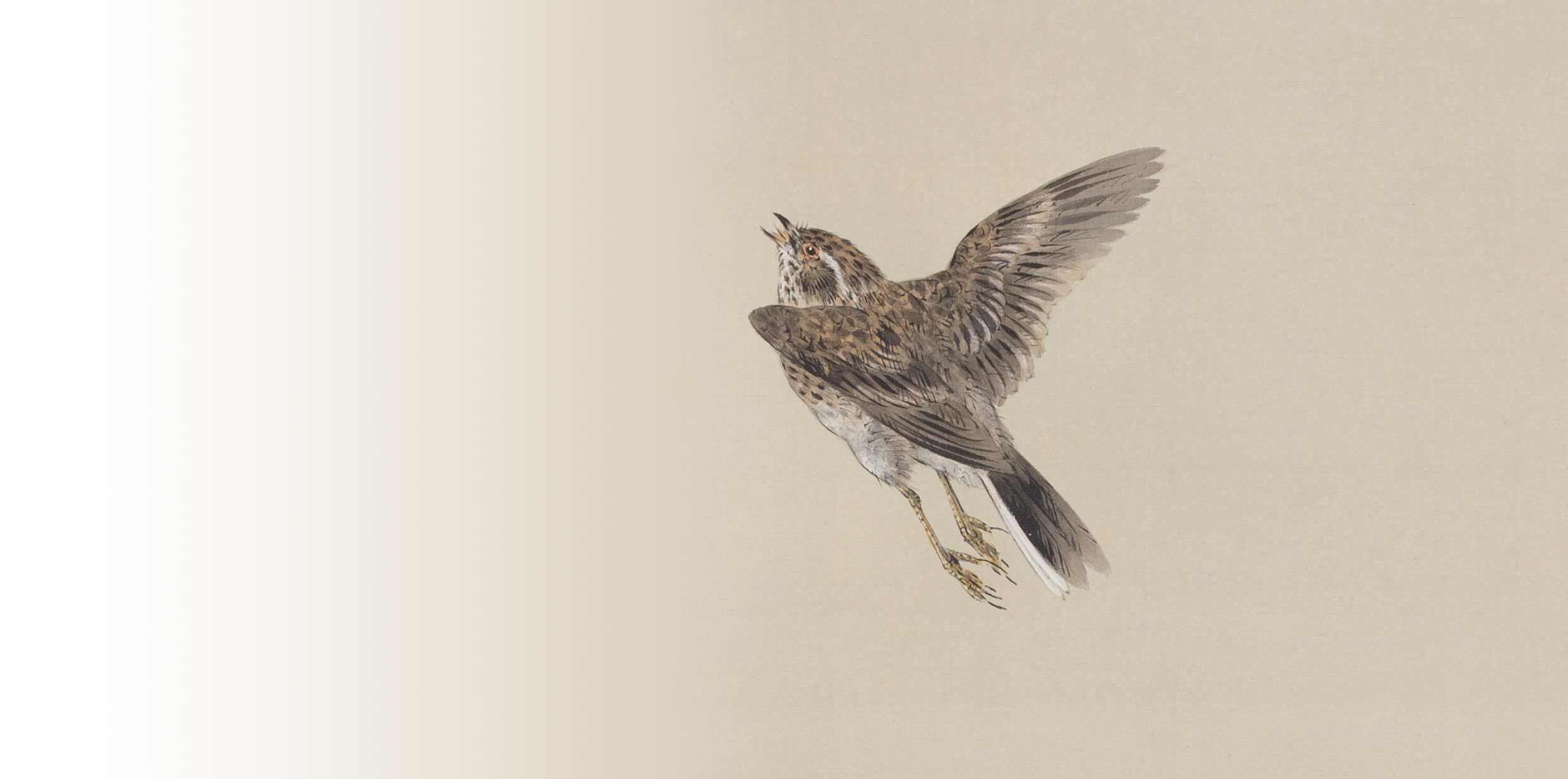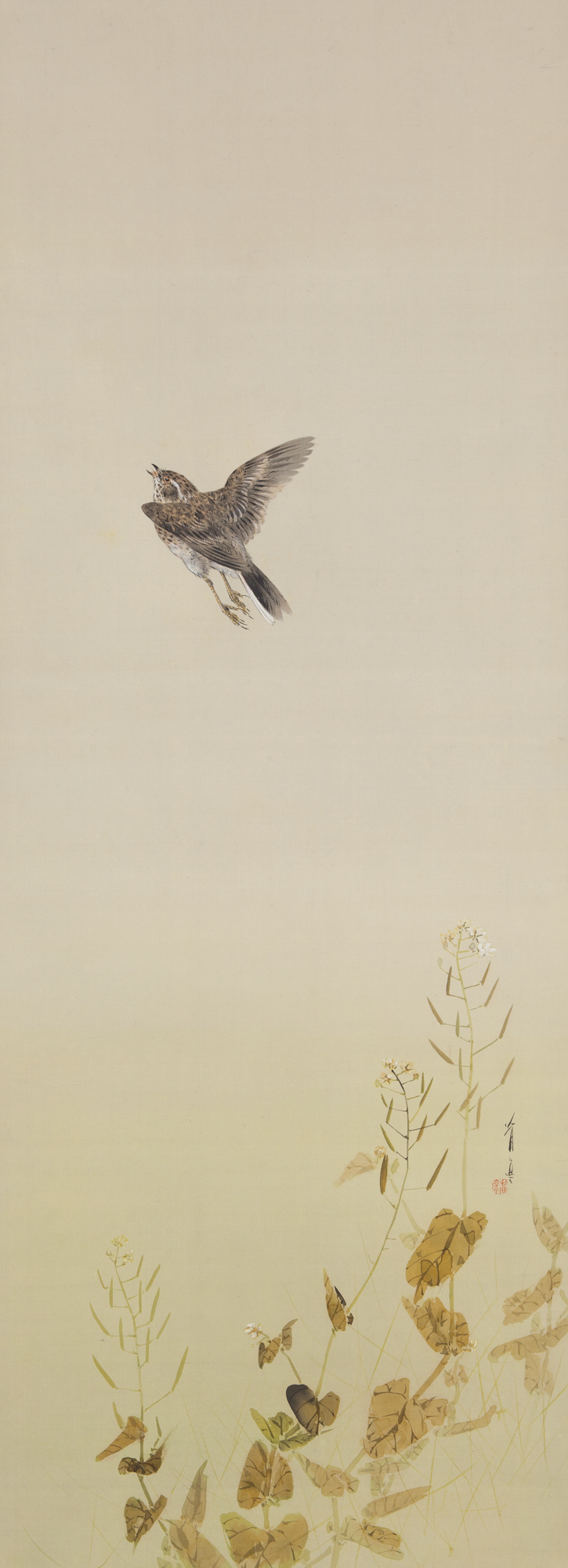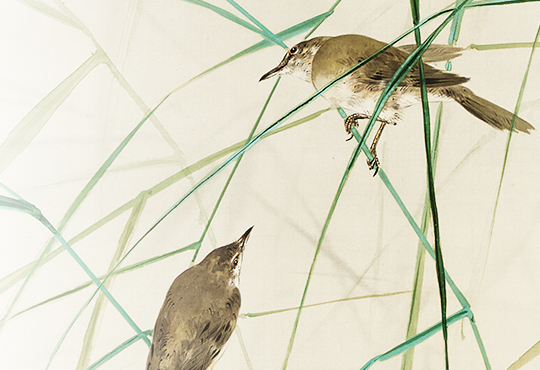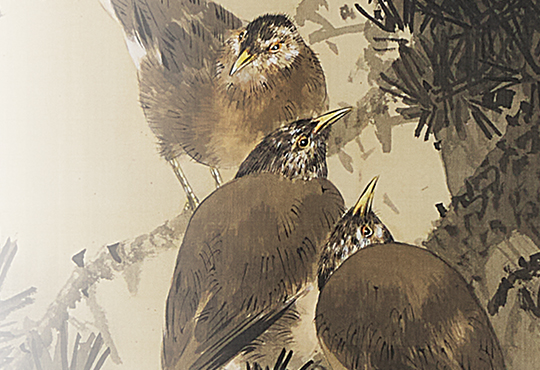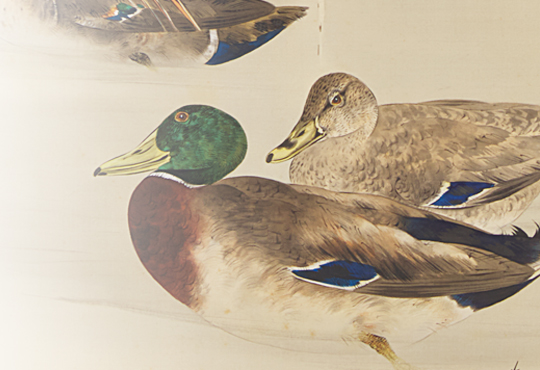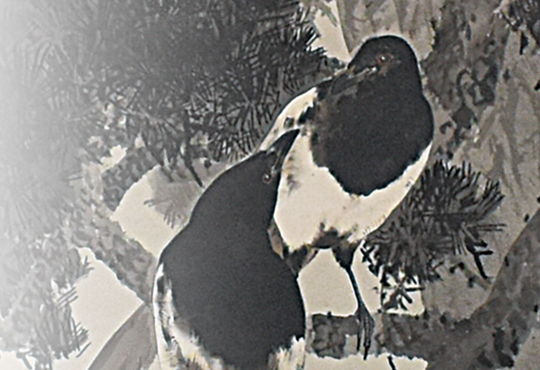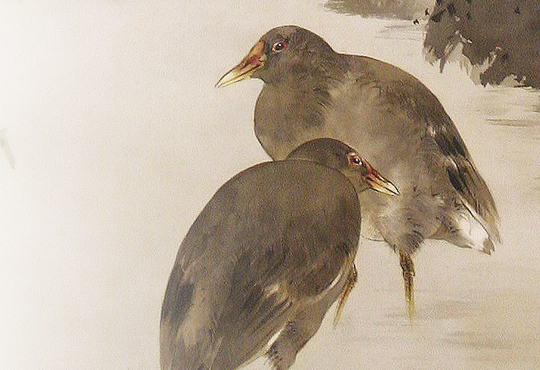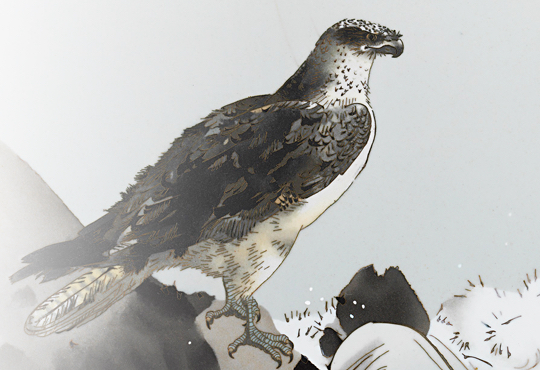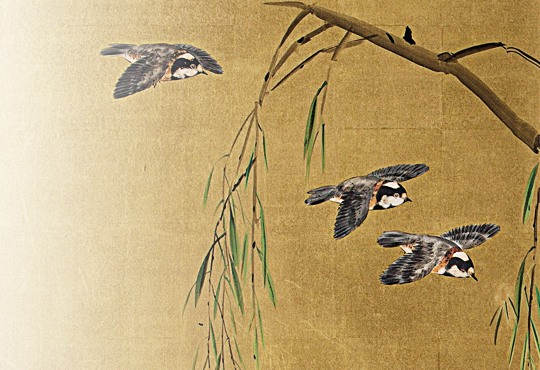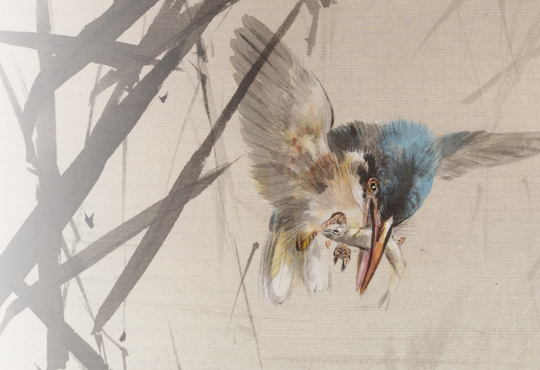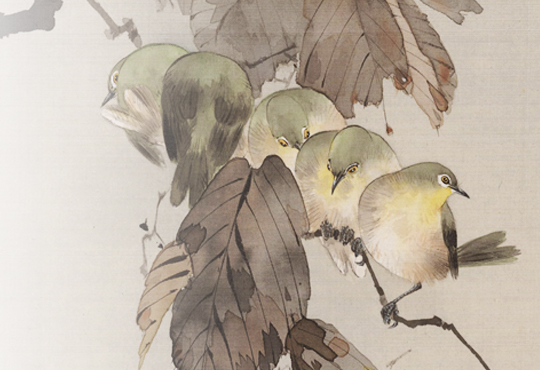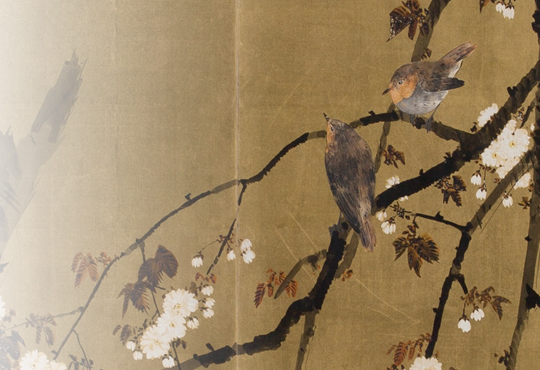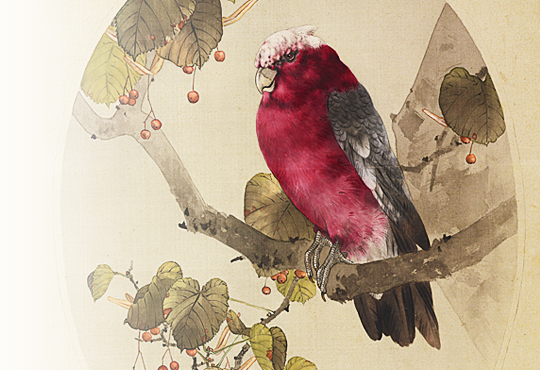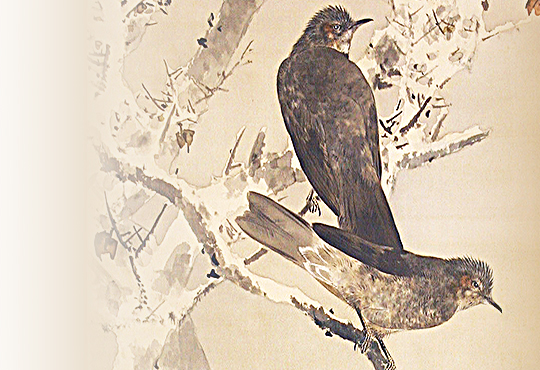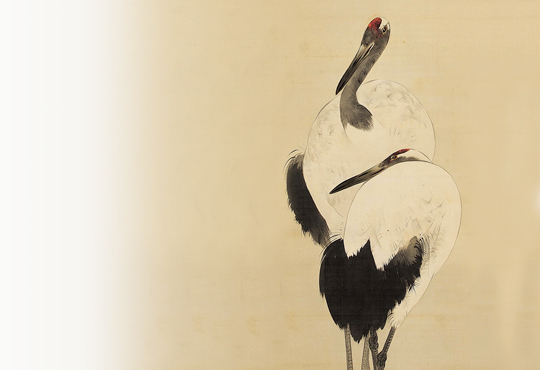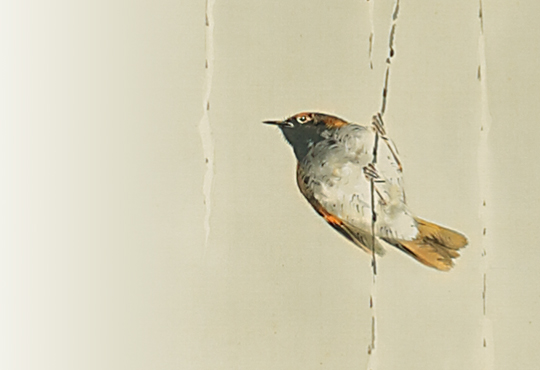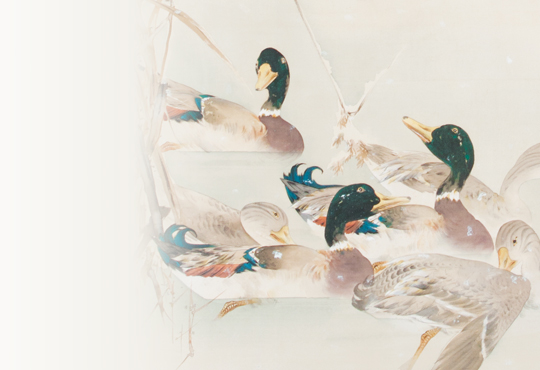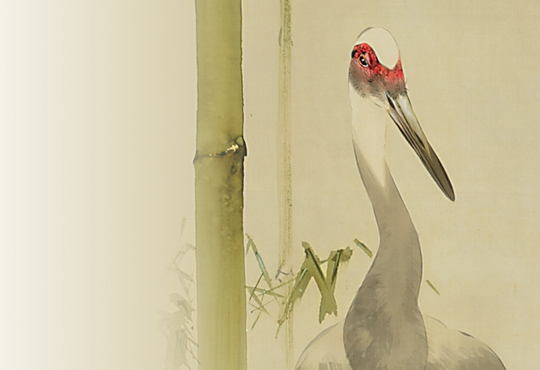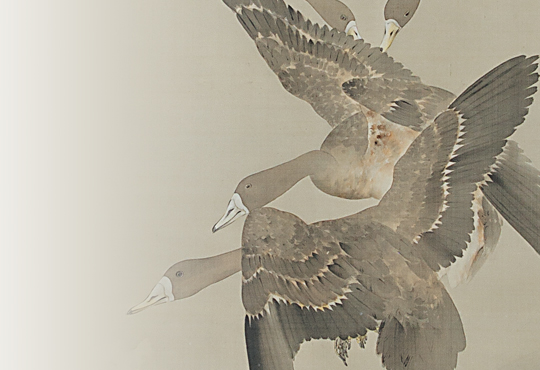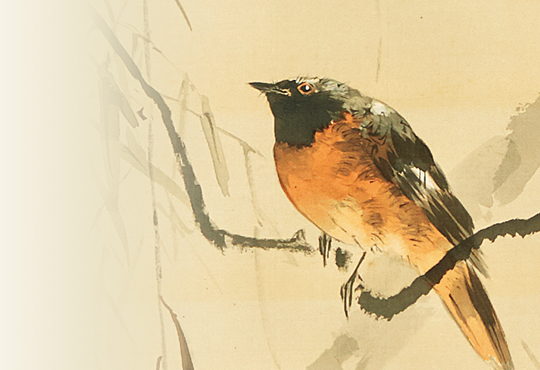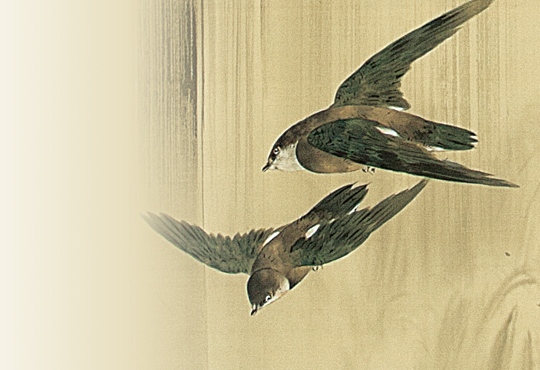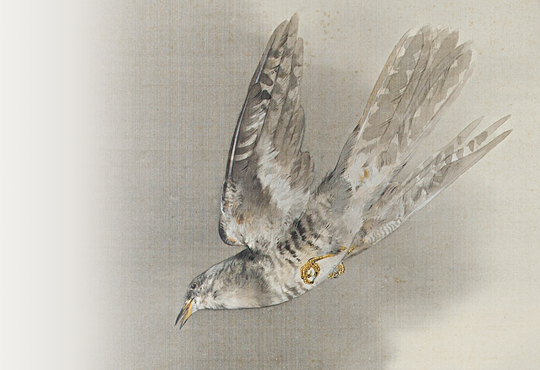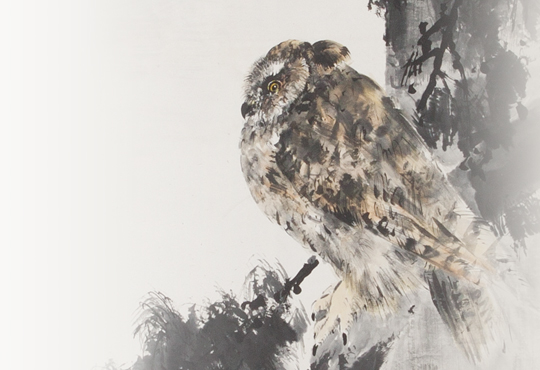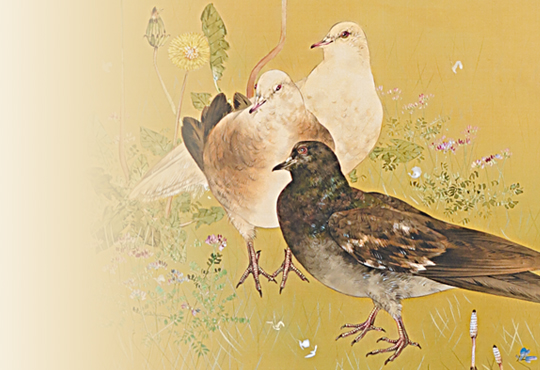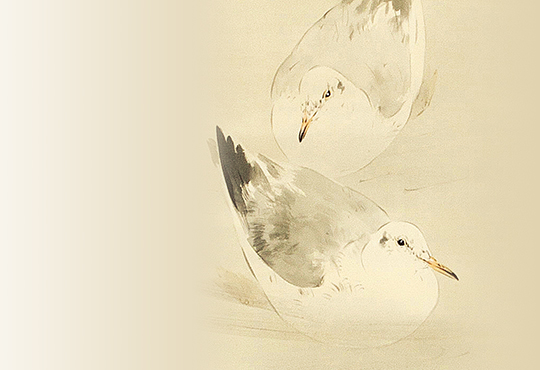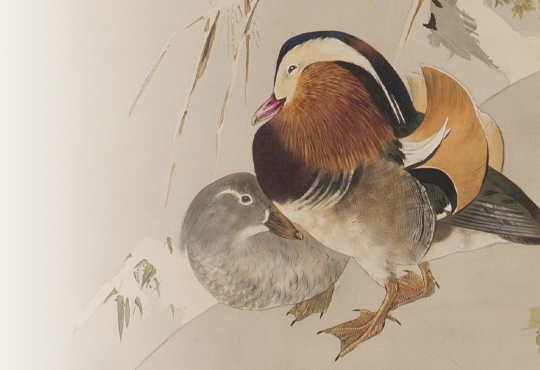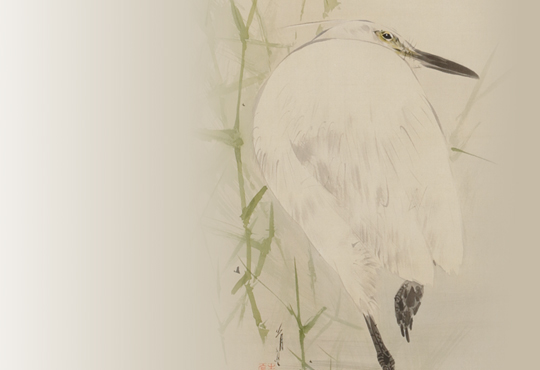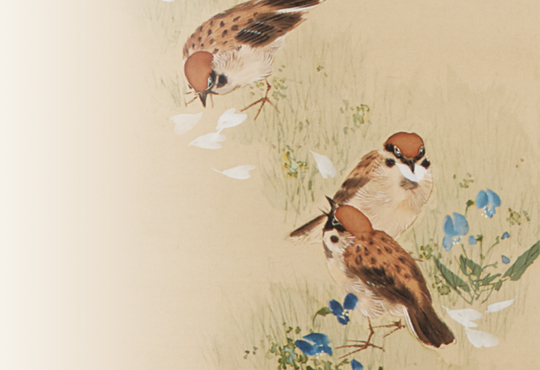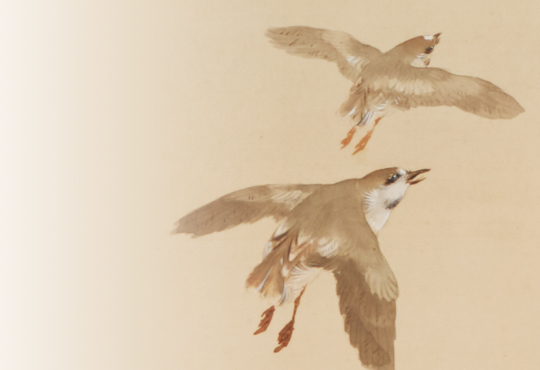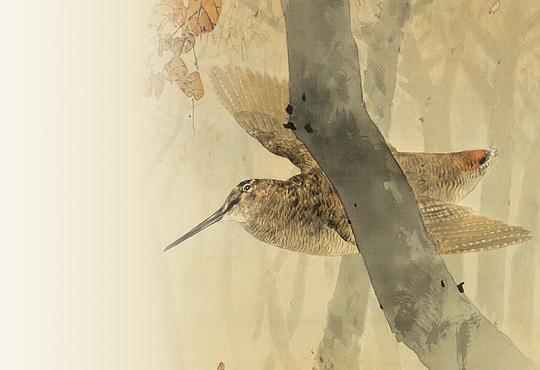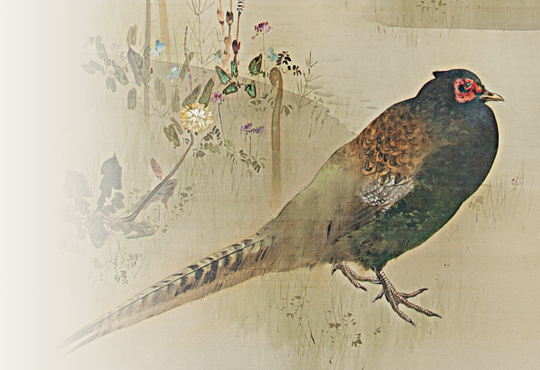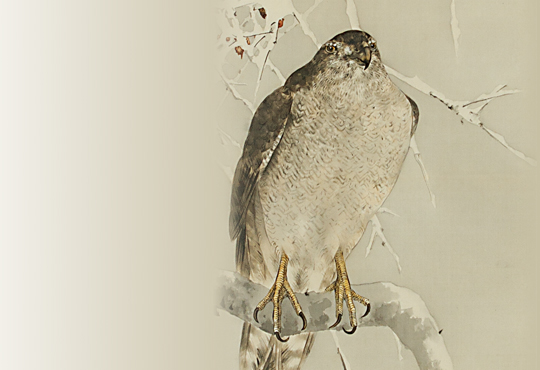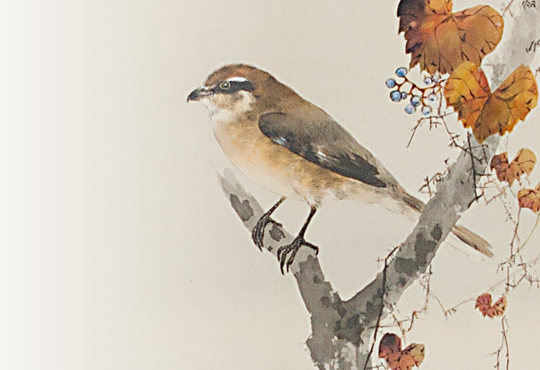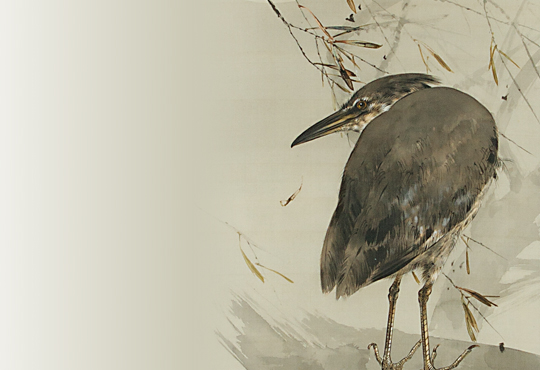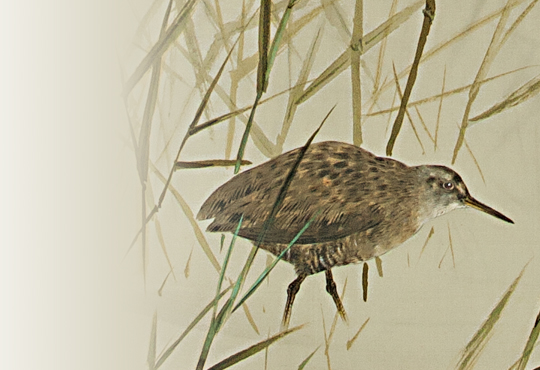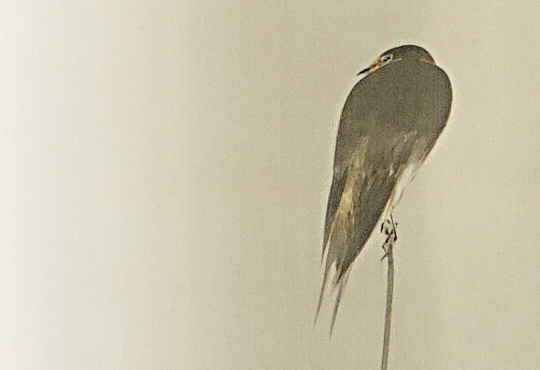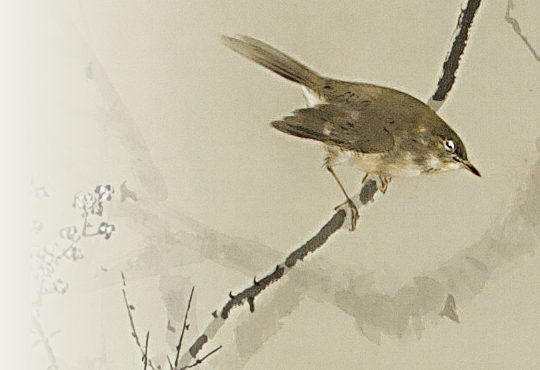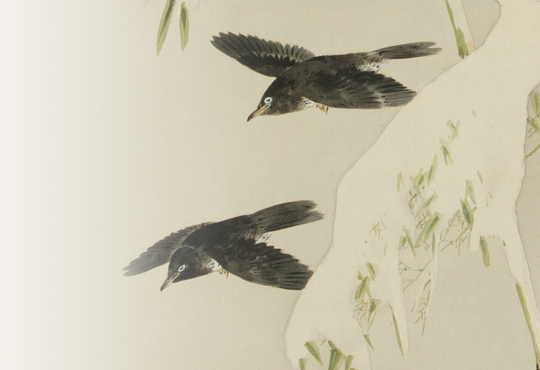vol.15 The One Winged Mystery: Birds and Flowers in Four Seasons / Spring
Upon first glance, this work appears to be a mystery. As cute white Shepherd’s Purse flowers bloom in the lower register, a skylark soars above in the upper register . With his mouth agape, he spreads its wings, kicks the ground and flies- dancing- into the air. The work eternally preserving his instant song flight motion towards the sky. However, what makes this work strange is the way it its posture is depicted; with its right wing spread and its left wing closed. What sort of intention did the artist have in illustrating the skylark this way?
Eurasian Skylarks (Alauda arvensis; 17cm in body length) are widely distributed from Europe to East Asia, and breed in the Japanese grasslands of Hokkaido to Kyushu. Known as a familiar bird that sings when spring is approaching, in early spring, the skylark is often seen around farmlands and riverbeds. Its most distinctive feature is the male skylark’s song flight. Singing “pichu-pichu piriri chui-chui” loudly, the male skylark launches directly into the sky, flying higher and higher, and suddenly stops to sing and descends into the ground. This song flight ritual functions to defend the male skylark’s territory from surrounding competitors and attract potential mates, and is, thus, done in repetition. Due to its modest brown coloration, this song flight ritual is crucial to their survival and breeding, as well as to the ways we perceive the seasonality and culture of the skylark.
Now, how shall we interpret this “one-winged mystery” and why did Seitei choose to depict the bird in such a strange manner? To answer this question, I began by carefully observing the skylark’s song flight ritual. Perhaps, there was something behavioral that went unnoticed in the way a skylark would initiate their song flight ritual. While Seitei was known to be a sharp observer of birds, and would often draw them through observation, it is I who is the active and professional ornithologist. No way shall I lose this ornithological observation battle to a Japanese painter! With this determination, I observed the skylark countless times but, alas, there was no such one-winged action to be seen. What must this imply?
As I reassessed the work, I noticed a crucial misconception; that, in actuality, the skylark’s left wing was opened and, therefore, Seitei did depict the skylark correctly. How could this have gone unnoticed? Perhaps this was due to the extent of Seitei’s realism.
Due to the structure of their bodies, birds are difficult subjects to draw. While their torsos are ellipsoidal or spindle-shaped, they also have various protruding organs: their heads are attached by a beak, their torsos by two legs and two wings, and a tail extends from their rears. In any case, these protruding appendages are either slender or thin, flat or extends far from the body. Hence, by attempting to capture these details under direct primary observation, one becomes unable to visually accommodate and render a bird’s outlines. As such, many painters would often depict the face of a bird from the side, and their torso and wings from the side or above. I suspect this avoidance of other angles was intentional because, no matter how skilled the painter, it’s impossible to render a complex three-dimensional structure unto a two-dimensional space.
In this work, the skylark is depicted from his left back side. For that, the tip of the left wing was made to face the front of the picture- making it difficult to illustrate the outlines of the skylark. Even so, Seitei chose to depict the bird in this posture. As this was a time without high-speed cameras or any machinery of that sort, when making the work, Seitei must have referred to a three-dimensional skylark by either imagining a revolving form from memory or by drawing from an actual object, whereby he would have accurately depicted from what he saw. Nonetheless, we viewers cannot correctly imagine these forms. Perhaps my prior misconception was due to my inability to fully comprehend the accuracy of Seitei’s depiction.
Seitei’s realism is impressive. The art he creates goes far beyond our ability for comprehension and, in turn, leads us to a world of wonder and mystery. His transcendent technique gives his works a unique and outstanding quality that causes us to be continuously attracted to and appealed by his art.
Author : Masao Takahashi Ph.D. (Ornithologist)
Dr. Masao Takahashi was born 1982 in Hachinohe (Aomori prefecture) and graduated from Rikkyo University’s Graduate School of Science. Dr. Takahashi specializes in behavioral ecology and the conservation of birds that inhabit farmlands and wet grasslands. Focusing on the relation between birds and art, he has participated in various museum and gallery talks.
